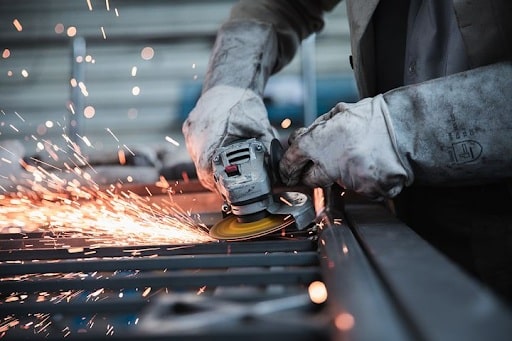Many industries rely on the use of pipes and tubes in their daily operations. As a result, they must have a basic understanding of how these pieces are cut into parts to ensure that they fit properly once installed. In this article, we will cover some of the common techniques for cutting these pieces.
Abrasive Cut
One of the more common techniques for cutting tubes is the abrasive cut method. This method of tubecutting uses a strip-wheel with sandpaper attached to it, which spins around inside a metal chassis that has been bent into shape. The metal chassis is then moved closer and farther away from the wheel as it spins, effectively grinding down the pipe until it cuts through. This method has been used for years with great success.
However, as the efficiency of this process increased, so too did the speed at which it can be done. As a result of this, some people have moved onto more modern equipment and started using abrasive cut-off machines. These machines work by grinding down a tube with two wheels instead of one, and they do so much more quickly than their predecessors.
Although these machines can work faster than strip wheels, they require the use of more complex machinery to operate them smoothly and efficiently. This gives rise to several new problems that must be solved for these new power tools to truly come into their own.
Single Edge/Double-Edge Blades
Another technique that can be used to cut tubes involves the use of a single edge, as well as double-edge blades. When using this method, some sawing techniques may produce burrs or rough edges on the tubing. If you do not remove these burrs it could cause clearance issues with other fittings and components later on.
Some materials such as stainless steel and hardened steel can be difficult to see through. This makes it difficult to achieve a clean cut with this method when using these materials. If you are attempting to use this method with these types of materials, it may be helpful to use a more abrasive sawing technique.
Melt Cut
The melt cut is yet another popular method for cutting tubes and pipes. This process uses a high-velocity die-grinder with a carbide tip, which will then be applied to the outside of the tubing. This method typically achieves a smooth and clean finished edge, which can reduce future maintenance needs on your machines.
The melt cut is normally used for the outside edge of the tubing. This process cuts down significantly on burrs and sharp edges, which can cause problems with transporting materials and people. The melt cut is also commonly used in the construction of medical equipment. This process can reduce leaks and make sure that everything is safe to transport around the hospital.
The melt cut is normally seen as a good method for creating smooth and clean edges on tubes and pipes, especially those used in medical equipment where safety is of the utmost importance.

Hack Sawing
The hacksawing technique is also a common choice for cutting tubes and pipes. To begin, the hack saw is held at a 45 degree angle relative to the tube. This should be done on one side of the tube until you have completely sawed through it.
Next, symmetrically repeat this process on all other sides of the tube with your hacksaw blade inside of its metal chassis for guidance as it travels around the tube’s circumference.
Finally, use fine-grit sandpaper to smooth out any rough edges and bring your hack-sawed cut closer in shape and size to that of a perfect circle. This is typically accomplished by clamping down sandpaper onto a flat surface so you can rotate your piece as needed as well as achieve an even edge all along with it. This method also works well for large-scale applications that are made from solid stock or sheet metal.
Shear Cut
The shear cut is another popular method for cutting tubes and pipes. This process uses a blade that is heated up to an extreme temperature, which is then used to slice through the outside of the tube. The blade will move around in a circular motion, causing the metal to melt as it cuts through until it reaches the end of its path. The result is a clean and precise cut that can be used for many applications. This process is preferred because it does not require any cooling fluids to operate, which reduces the chance of a spill during the cutting process.
The shear cut method has many applications in industry and can be used for anything ranging from paper tubes to pipe welds. It is a fast and effective way to form clean cuts while reducing overheating or damage due to wear and tear on other parts. This makes it an attractive option for companies that use metal tubing regularly. In addition, this method will produce finished edges that need little to no additional work after being formed, which saves time and money by requiring fewer employees working at any one time.
Compressive Cut
Another popular method for cutting tubes is the compressive cut. This process uses a wedge-shaped piece of metal that has been heated up to extremely hot temperatures, which will then be applied to the outside of the tubing using force. The heat from the hot wedge will cause a bevel to form on the opposite side of the tube as it cools down. This method is used by many industries today, and also provides one of the best-finished cuts for metalwork.
Depending on their application and the equipment available. The strip-wheel and hacksawing methods are two of the most common techniques for cutting materials like metal tubing and pipes while still producing a high-quality result. For some companies, this is an effective and time-saving method that offers excellent results while minimizing costs thanks to its simplicity and ease of use. However, if you need more information and reliable metal cutting for your industrial business, try to read the reviews for Boss Laser. They also offer a user-friendly laser machine with a high-quality cut and grade that you will surely like.
The shear cut process is also a common choice for cutting metal tubing and pipes. Thus, even though using these machines can be a bit more expensive at first compared with free-hand methods like hacksawing or strip-wheels, they offer their benefits as well. In fact, for some companies, this might be the most attractive option considering the value it offers compared with other options on the market today.
There are many different methods for cutting tubes and pipes. Depending on what sort of equipment you have available or how much money you want to spend will determine which method is best for your application. If any of these tube or pipe cutting techniques don’t work for your application, you can always seek out a company that specializes in tube processing and ask for their advice.




























